The Alfa Romeo Sprint Zagato was produced in two series between 1957 and 1962 and was the ultimate sporting development of Alfa Romeo's Giulietta. In motorsports, it often outperformed cars of greater engine capacity, was surprisingly fast and successful, and won a series of impressive races. The lightweight coachwork by Zagato combined with a specially tuned engine helped the Giulietta SV establish an enviable record in production car racing, with notable victories that include the Gran Turismo class win in the 1956 Mille Miglia.
Coda Longa Coupe by Zagato
View info and historyThe Alfa Romeo Giulietta
The Giulietta range was introduced in 1954 with the arrival of the Franco Scaglione of Bertone-styled Sprint 2+2 coupé, and the four-door Berlina saloon not appearing until the succeeding season. In mid-1955, the open two-seat Giulietta Spider with bodywork by Pinin Farina became available. In 1957, a more powerful Berlina version, called Giulietta T.I. (Turismo Internazionale), was introduced with minor styling changes to the hood, rear lamps, and dial lights. Additionally, Carrozzeria Colli built ninety-one examples of the Giulietta station wagon. From 1954 to 1965 a total of 177,690 Giuliettas were made with the majority in Berlina, Sprint coupe, or Spider body styles. Carrozzeria Zagato
Coda Longa Coupe by Zagato
View info and historyUgo Zagato began his coachbuilding career in 1919 and established his business - Zagato - in Milan. Focusing on lightweight, rigid, and sophisticated constructional techniques, his talents were soon enlisted by Alfa Romeo to cloth the G1, RL and RM models. The lightweight coachwork applied to the 6C 1500 placed 2nd overall at the 1927 Mille Miglia and won the 1928 edition. The Zagato-bodied cars would earn a slew of victories including at the Mille Miglia, Targa Florio, Le Mans, and Spa Francorchamps - at the 1938 Mille Miglia, one-third of the participants wore Zagato coachwork. Since its inception, many prominent manufacturers would select Zagato for coachwork including Maserati, Fiat, Lancia, AC, Abarth, Bristol, Fraser Nash, Jaguar, Osca, Porsche, Renault, Aston Martin and Ferrari. Ugo's first-born son, Elio Zagato, would carry on the family coachbuilding tradition and enjoyed a rather successful racing career including scoring a victory at the 1955 International Granturism Championship at the Avus circuit driving a Fiat 8V GT Zagato.
Coda Longa Coupe by Zagato
View info and historyAs the demand for special bodies increased during the 1950s and 1960s, the company transitioned from a handcraft to an industrially-based organization. The company moved to a larger facility in Terrazzano, northwest of Milan and close to Arese where Alfa Romeo would soon build its new plants. The partnership between Alfa Romeo and Zagato flourished with the latter being tasked to build coachwork for the Giulia SZ, the TZ, TZ2, 2600 SZ, the 1750 4R and the Junior Zagato.The Birth of the Alfa Romeo Giulietta SZWhen Elio Zagato received a wrecked Sprint Veloce in 1956, he breathed new life into the vehicle by clothing it with a lightweight, aerodynamic, and aesthetically pleasing body. Now able to rival cars of far greater displacement, other Sprint Veloce owners soon followed suit. Impressed by the performance and popularity, Alfa Romeo contracted Carrozzeria Zagatoto to create a limited run of factory-sanctioned racing cars.The Sprint Zagato (SZ)
At the time, Alfa Romeo already had a high-performance version of the Giulietta - the 'Sprint Speciale,' built in collaboration with Bertone. It used the short-wheelbase Giulietta chassis, a high-compression, double twin-choke carbureted 1.3-liter (1,290cc) twin-cam engine, and an aerodynamic two-seater coupe bodywork built from steel.
Coda Longa Coupe by Zagato
View info and historyLike the Bertone-bodied Sprint Special (SS), the Sprint Zagato (SZ) would use the short wheelbase Giulietta chassis (93.7 inches) but its aluminum body was lighter and its design was considerably rounder. Each body took Zagato craftsmen over 300 hours to complete, resulting in an expensive automobile, keeping production to a minimum. The mechanical components were similar including the high compression engine offering 99 horsepower (100 PS) (in race tune, engine output exceeded 115 hp) at 6,500 RPM, a five-speed manual gearbox, finned aluminum drum brakes, and an independent front suspension with coil-over shock absorbers. The Sprint Zagato was built in two versions, the Coda Tonda (round tail) and later a Kamm-tail designated Coda Tronca (short tail). The first generation (Coda Tonda) was built from 1960 to 1961 with approximately 180 examples (as few as 169) constructed. The second generation (Coda Tronca) was produced in 1961 and 1962 with approximately 30 examples (as many as 44) built. A few existing Coda Tonda's were later re-bodied with the Coda Tronca design. SZ chassis numbers ran from '001' to '217.'The Sprint Zagato (SZ) : Second Generation 
Coda Longa Coupe by Zagato
Chassis #: AR1012600196The second generation of the Sprint Zagato had a cut-off Kamm tail at the rear with a wrap-around rear window. Ercole Spada, a newly employed designer, fashioned the more aerodynamic bodywork, bestowing long tails ending in a Hamm treatment (similar to the Giulia 1600 TZ which immediately followed in production) and lower roofs. They were lighter and slimmer than its predecessor and the mechanical specification was enhanced with the addition of Girling disc brakes at the front (most SZ2s had disc brakes). The steel inner wheels had aluminum outer rings. A higher final drive ratio was sometimes added in order to enhance speeds made capable by the streamlined body shape. These highly-developed, small-displacement late-production SZ sports cars were created for high-speed circuits like Monza and Le Mans, and were the final evolution of the racing Giulietta and direct predecessor to the Giulia TZ. Tipping the scales at 785kg, the Sprint Zagato had a top speed in excess of 200 km/h, easily making them the fastest of the Giuliettas. Among the accolades achieved by the SZ was a victory by Michel Nicol in the 1957 Tour de Corse, and a pair of victories in the 1962 and 1963 International Championship for GT Manufacturers.
by Daniel Vaughan | Jan 2023
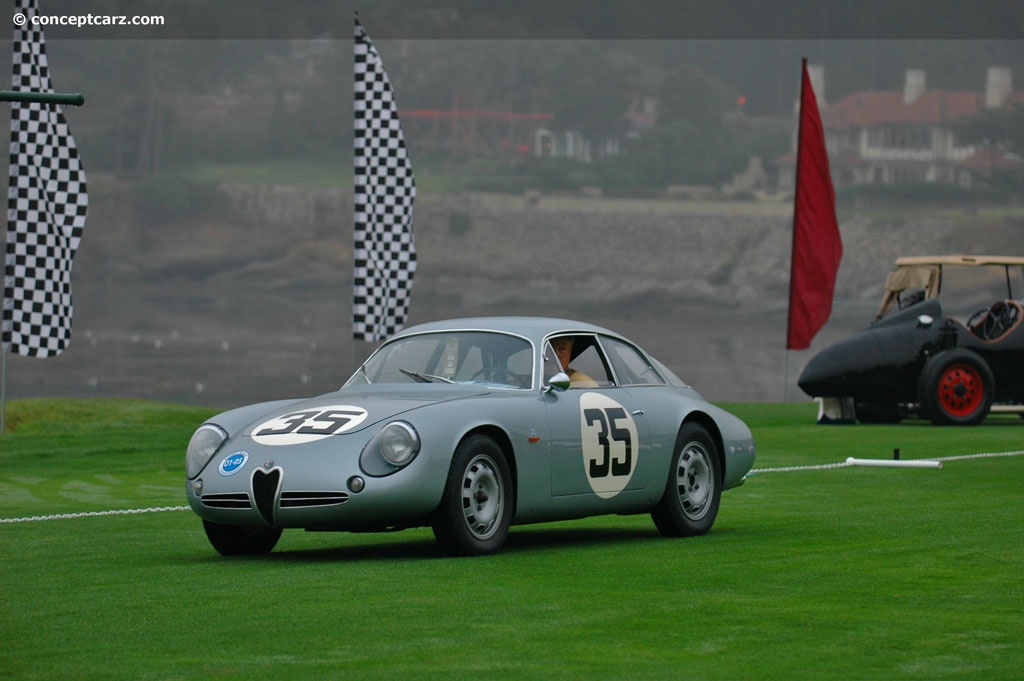
Coda Longa Coupe by Zagato
View info and history
The Giulietta range was introduced in 1954 with the arrival of the Franco Scaglione of Bertone-styled Sprint 2+2 coupé, and the four-door Berlina saloon not appearing until the succeeding season. In mid-1955, the open two-seat Giulietta Spider with bodywork by Pinin Farina became available. In 1957, a more powerful Berlina version, called Giulietta T.I. (Turismo Internazionale), was introduced with minor styling changes to the hood, rear lamps, and dial lights. Additionally, Carrozzeria Colli built ninety-one examples of the Giulietta station wagon. From 1954 to 1965 a total of 177,690 Giuliettas were made with the majority in Berlina, Sprint coupe, or Spider body styles. Carrozzeria Zagato
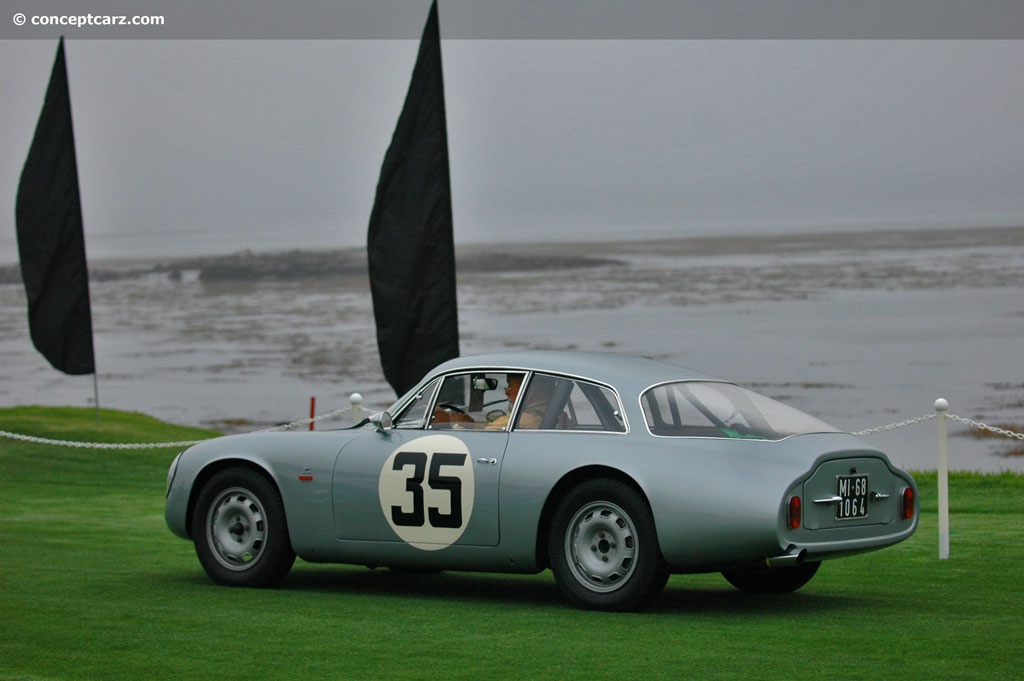
Coda Longa Coupe by Zagato
View info and history
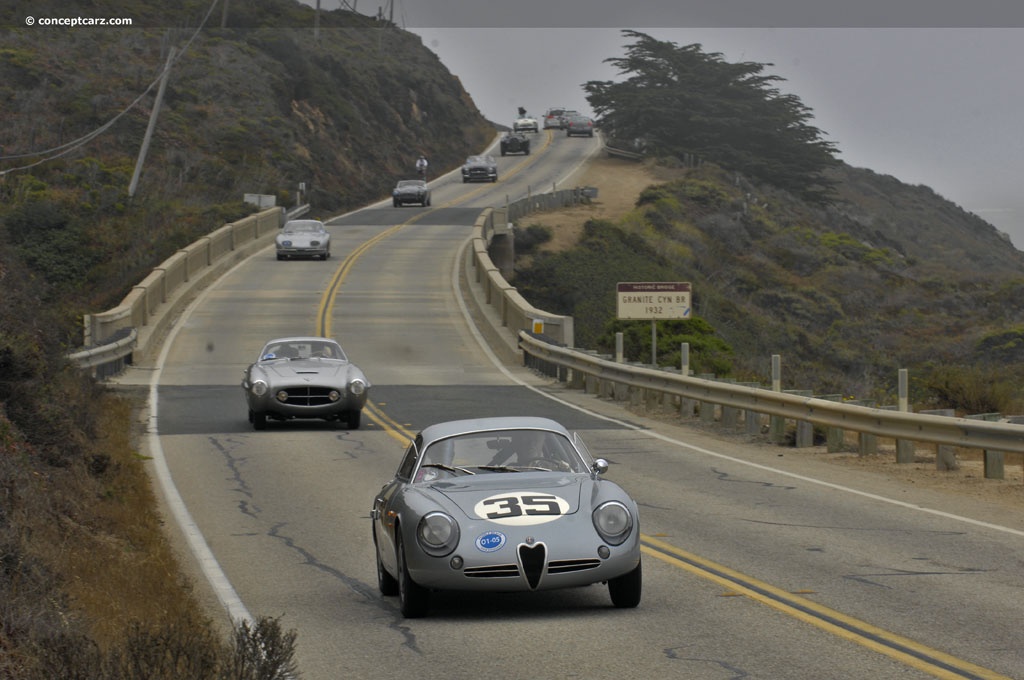
Coda Longa Coupe by Zagato
View info and history
At the time, Alfa Romeo already had a high-performance version of the Giulietta - the 'Sprint Speciale,' built in collaboration with Bertone. It used the short-wheelbase Giulietta chassis, a high-compression, double twin-choke carbureted 1.3-liter (1,290cc) twin-cam engine, and an aerodynamic two-seater coupe bodywork built from steel.
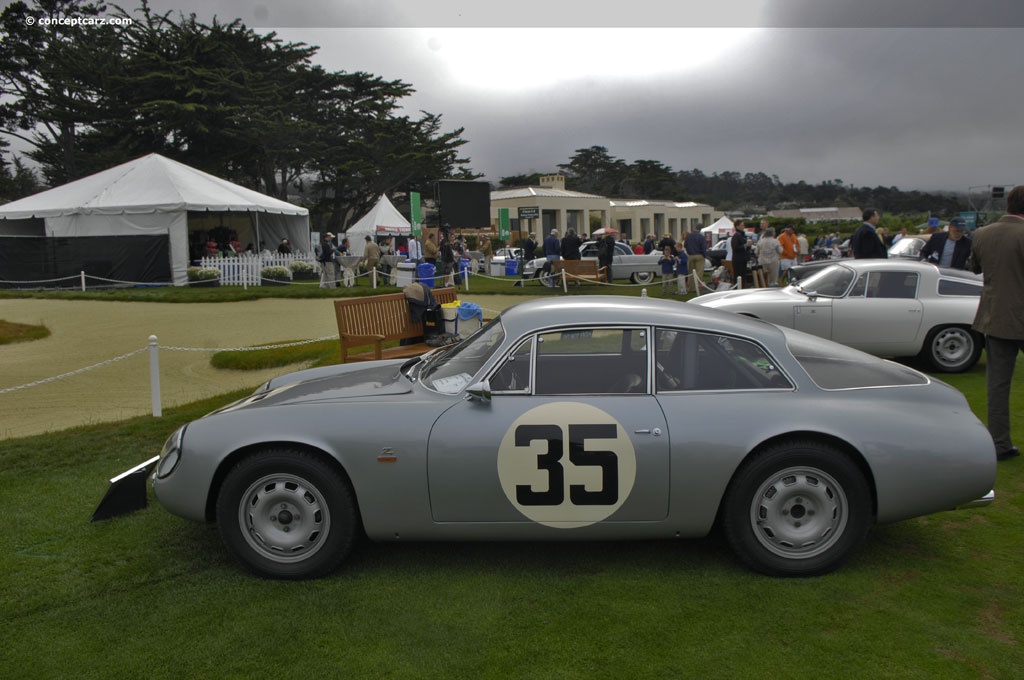
Coda Longa Coupe by Zagato
View info and history
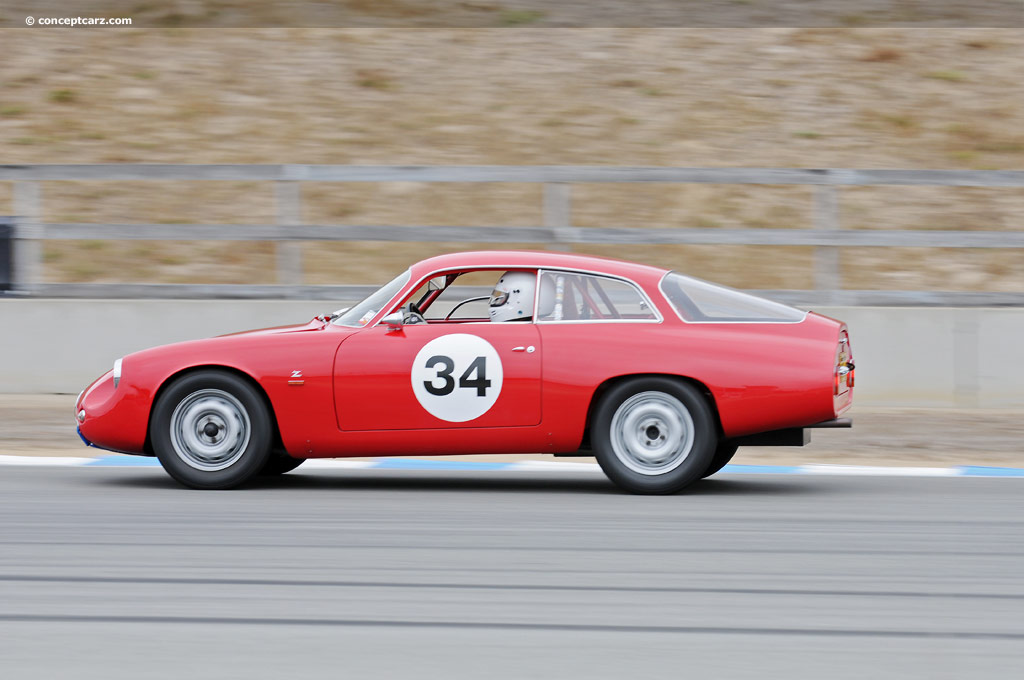
Coda Longa Coupe by Zagato
Chassis #: AR1012600196
by Daniel Vaughan | Jan 2023
Related Reading : Alfa Romeo Giulietta SZ Coda Tronca (truncated tail) History
From the start this high-performance super coupe Alfa Romeo SZ was dubbed Il Monstro or Little Monster. During its lengthy automotive history, Alfa Romeo has been responsible for some awe-inspiring designs, and the Sprint Zagato or ES-30 (Experimental Sportscar 3.0 liter) was one of the most controversial of its models. The development occurred at lightning speed, taking only 19 months from the....
Continue Reading >>
Continue Reading >>
Related Reading : Alfa Romeo Giulietta History
Prior to World War II, Alfa Romeo was blessed with a mystique that few companies have ever been able to duplicate. Perhaps the easiest way to describe prewar Alfa Romeo is to compare it with postwar Ferrari, a company whose relentless dominance on the racetrack and in the garages of millionaires has become a familiar fact of life. It was, after all, with Alfa Romeo that Enzo Ferrari began in earnest....
Continue Reading >>
Continue Reading >>
Related Reading : Alfa Romeo Giulietta SZ Coda Tronca (truncated tail) History
Bridging the gap between the Alfa Romeo SZ and the TZ, the Alfa Romeo Gilietta SZ2 was a competitive vehicle that could also be used on the road. A descendent of the Guilietta Sprint Veloce, the SZ was for only the most of serious drivers. The Giulietta SZ featured a five-speed gearbox and produced 100 bhp from its 1,290 cc DOHC engine. It had a top speed of 120mph and was the spearhead of Alfa....
Continue Reading >>
Continue Reading >>
Related Reading : Alfa Romeo Giulietta History
The 1954 Alfa Romeo Giulietta was an important vehicle for the Company, because it was the first offering since World War II that truly resembled the racing-inspired vehicles Alfa was capable of producing. The vehicles were mass-produced, a first for the company. The Giulietta came in various body styles including the Spider, Sprint, TI, and Veloce. The vehicles were built with the engine in the....
Continue Reading >>
Continue Reading >>
Similar Vehicles
Similarly Sized Vehicles
from 1962
Alfa Romeo Monthly Sales Volume
March 2023
2,390
1962 Alfa Romeo Giulietta SZ Vehicle Profiles
Recent Vehicle Additions
Performance and Specification Comparison
Giulietta SZ Coda Tronca (truncated tail) Specification Comparison by Year
Year
Production
Wheelbase
Engine
Prices
Related Automotive News

Lamborghini 350 GT returns to Geneva 60 years after its debut
Automobili Lamborghini celebrates its first production model by taking it back to the city where it was unveiled in 1964 by Ferruccio Lamborghini
In March 1964, Automobili Lamborghini was still in its infancy. Established just a few months previously,...

Gooding & Company Releases Entire Catalogue for Upcoming London Sale, Led by a 1953 Ferrari 166 MM/53 Spider Offered from Long-Term Ownership
The London Auction at Hampton Court Palace will present an unrestored Ferrari 166 MM53 Spider and Ferrari 250 Europa, as well as a desirable Fiat 8V Berlinetta and right-hand-drive Aston Martin DB5 Convertible.
Gooding %26 Company, the international...

Concours of Elegance 2021: The rarest cars in the world
The Concours of Elegance has revealed the full list of vehicles that make up its Main Concours display of the rarest cars in the world
From trailblazing pre-war Grand Prix cars to the very Rolls-Royce that gave birth to the best car in the world...

120 years of motor sport at Mercedes-Benz take centre stage at the Goodwood Festival of Speed 2014
Addicted to Winning at this years Goodwood Festival of Speed, Mercedes-Benz looks back on some fascinating racing victories of the last 120 years
The unique motor sport heritage of the Mercedes-Benz brand is being celebrated with an exclusive i...

Techno Classica 2014: more than 30 racing cars to celebrate 120 years of Mercedes-Benz motor racing history
Cars that were the heroes of magical moments put their stamp on this high-powered, most comprehensive show presentation
With more than 30 vehicles, Mercedes-Benz Classic presents motor racing history in all its unique breadth and depth
120 years o...






























